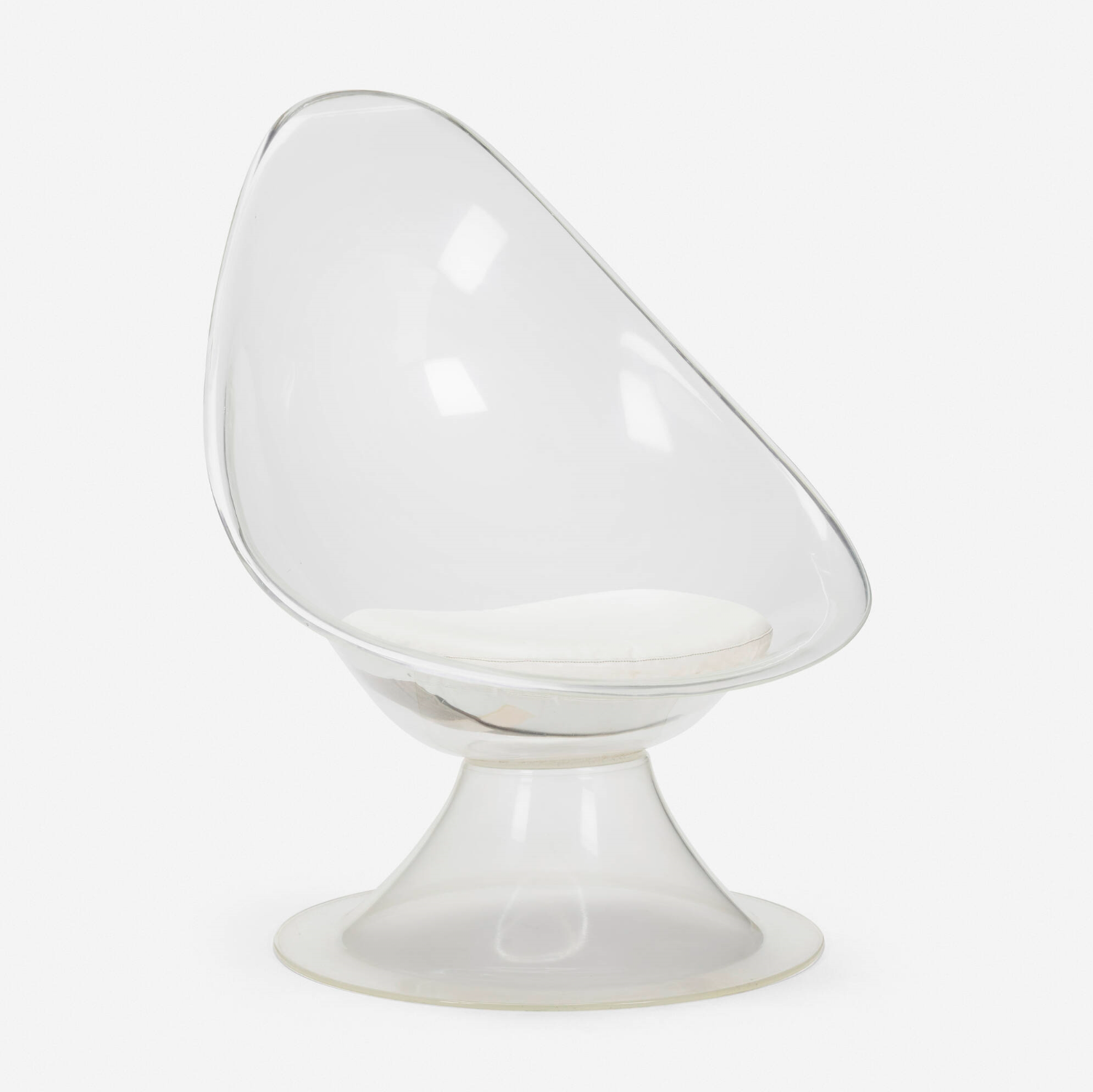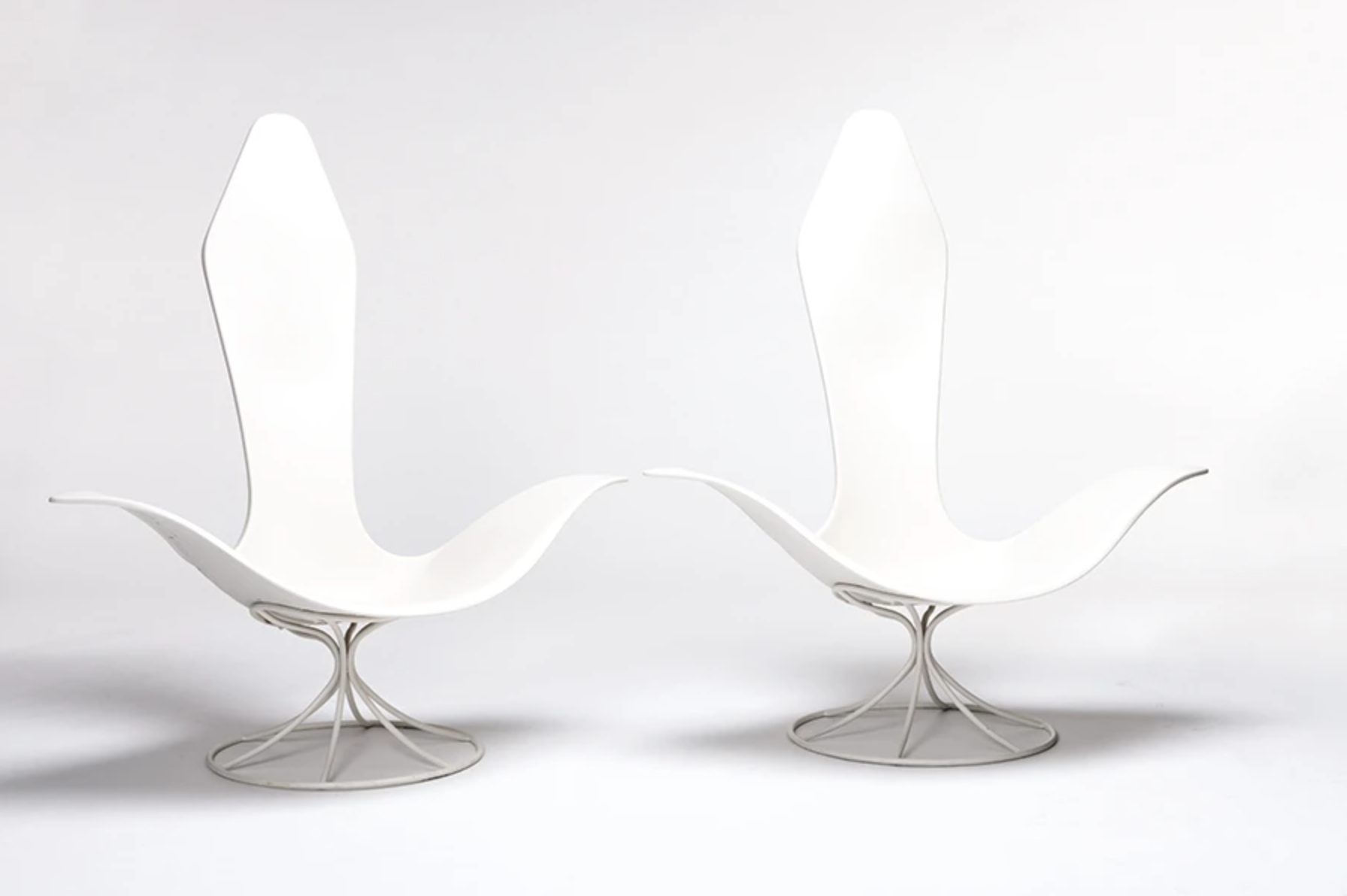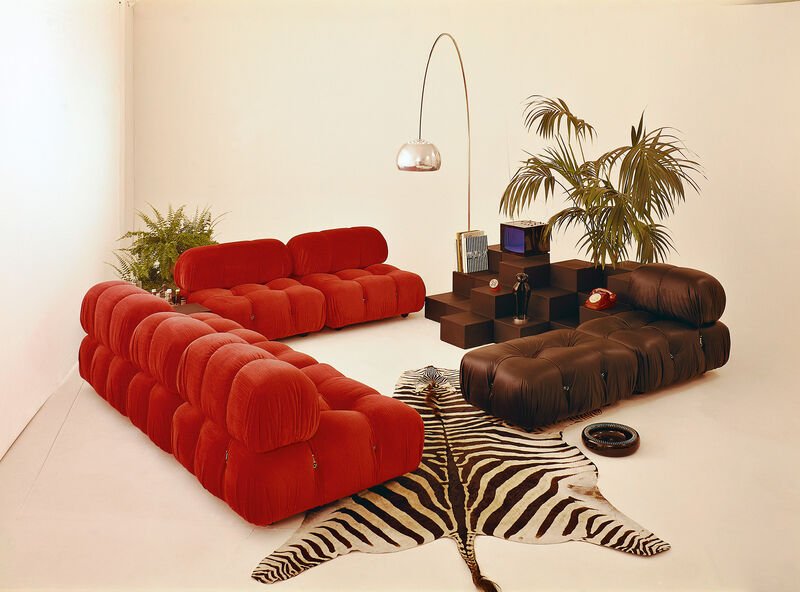Erwine & Estelle Laverne
‘Daffodil’ chair by Erwine and Estelle Laverne for The Invisible Group, 1957
‘Lily’ chair by Erwine and Estelle Laverne for The Invisible Group, 1960
‘Buttercup’ chair by Erwine and Estelle Laverne for The Invisible Group, 1960
Erwine and Estelle Laverne were an influential husband-and-wife design team known for their innovative furniture designs during the mid-20th century. They played a significant role in shaping the aesthetic of modern American furniture design, particularly during the 1950s and 1960s.
Erwine Laverne (1909-2003) was born in Romania, while Estelle Laverne (1915-1997) was born in New York City. In 1932, they both trained as painters at the Art Students League under Hans Hofmann. In 1934, they married and were inseparable. Soon, the Laverne's pooled their collective talent and focused on designing wallpaper, fabric and furniture.
The couple formed Laverne Originals in 1938, which became a largely influential New York company that was driven by their precise and unique modern artistic style. In 1957, they released their “Invisible Group” of curvy translucent furniture designed to exist in a space as, Erwine believed, “an element of contrast to eliminate sameness.” The molded acrylic seats and lean, fluted bases were reminiscent of Saarinen’s 'Tulip' chair, and the names of some of these Laverne pieces, like 'Daffodil,' 'Lily' and 'Jonquil,' resonated with their inspiration.
Unlike their competitors, they were hands-on in all phases of the work -- the designing, manufacturing, selling, promoting and advertising. Estelle, being the more poetic of the two, wrote the imaginative copy and named the designs.
They were among the first designers to experiment with new materials such as fiberglass, plastic, and Lucite, which allowed them to create furniture pieces that were both visually striking and functional.
One of their most iconic designs is the "Tulip" chair, which they created in 1957. This chair featured a molded fiberglass shell supported by a cast aluminum base, exemplifying their commitment to combining form and function. The "Tulip" chair became a symbol of mid-century modern design and remains highly sought after by collectors today.
‘Tulip’ chair by Erwine and Estelle Laverne for The Invisible Group, 1960
Rita Reif, who wrote about design for The Times in those years, gave the Invisibles a rave review in a 1958 article. She said recently: ''I knew immediately what it was, how innovative: it was the first time we saw full-fledged modern design in acrylic. Helena Rubinstein had clear plastic furniture in the 30's, but it was more traditional. This was so light and airy. Dreamlike. And so amusing. Really the most important thing they ever did.''
She interviewed the Lavernes many times over the years, and told me: ''They were very close. You usually saw them together.''
In addition to furniture design, the Lavernes also worked in interior design, creating modern and stylish interiors for homes, offices, and public spaces. They were known for their ability to create cohesive environments that integrated furniture, lighting, and architectural elements into a unified whole.
Erwine and Estelle lived most of their life on the Louis Comfort Tiffany estate, in Long Island, on over 100 acres of waterfront property. The Lavernes set up a haven for artists to live and create on the Tiffany Property. Many artists passed through the estate such as Alexander Calder. Others would go on to stay as artists in residence.
However, in 1952 the village issued the Lavernes a restraining order to cease and desist the manufacturing of wallpaper in a residential zone on the estate. The Laverne's argued that what they did was 'handcrafting', while manufacturing consists of a factory and heavy machinery. They endured years of legal battles, which took them away from their design business and passion. The court case went to the Supreme Court in the late 60's, where it was refused. After mounting legal costs and damage to their business, Estelle fell ill with multiple sclerosis and the couple ultimately died penniless in a nursing home.
Despite their sad ending, the Laverns left an unimaginable influence on the world of design. Throughout their career, the Lavernes received numerous accolades and awards for their contributions to design, including the prestigious American Institute of Decorators' Award of Merit. Their work continues to be celebrated for its timeless elegance and enduring influence on modern design. Their designs being coveted by dealers, aficionados and collectors from all over.
Notable Works
Erwine and Estelle Laverne Early settee from the Invisible Group USA, c1961
Erwine and Estelle Laverne Champagne stools, pair for Laverne Originals, USA, c. 1960
Erwine and Estelle Laverne ‘Philharmonic’ bench for Laverne Originals, USA, 1961
Erwine and Estelle Laverne settees for Laverne Originals, USA, 1953
Erwine and Estelle Laverne collection of six planters for Laverne Originals, USA, c. 1960
Erwine and Estelle Laverne occasional table for Laverne Originals, USA, c. 1960
Laverne Originals Textiles
DISCLAIMER: THE MILLIE VINTAGE DOES NOT OWN ANY RIGHTS TO THESE PHOTOS. PLEASE NOTE THAT ALL IMAGES AND COPYRIGHT BELONGS TO THE ORIGINAL OWNERS. NO COPYRIGHT INFRINGEMENT INTENDED.


































It’s no surprise that celebrities have the ability to acquire some of the most rare and incredible pieces of design. We are thrilled to see faces we look up to, enjoying vintage design as much as we do.